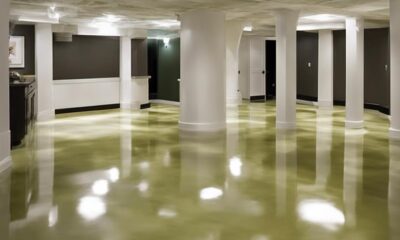Retreat
Best Time to Buy a Spa – Uncover the Ideal Season
At what point in the year can you score the ultimate deal on a spa? Uncover the secrets to maximizing your savings.
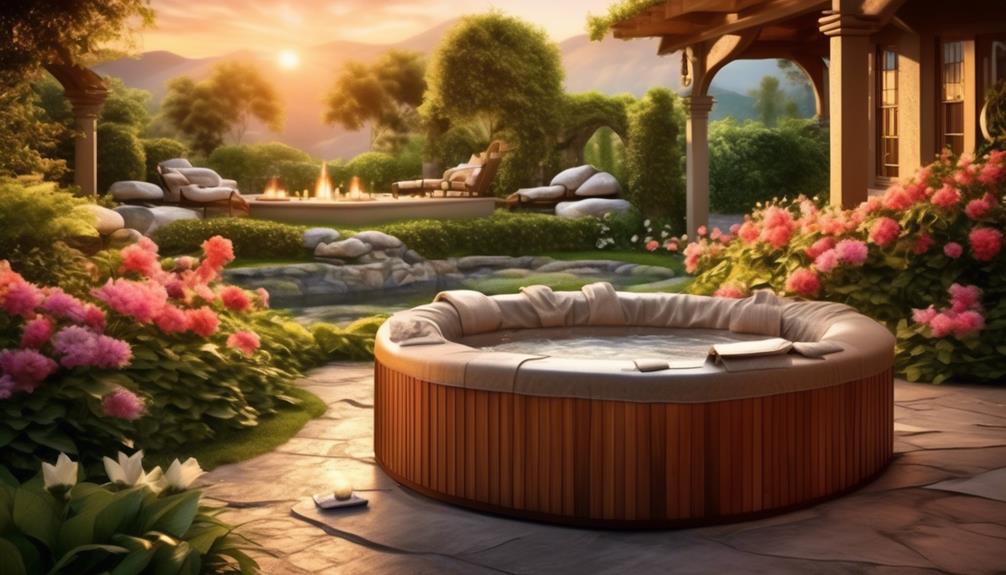
Many of us have been privy to whispers surrounding the optimal moment for purchasing a spa, but does a truly ideal time exist to secure the finest bargain? This is a query that has frequently occupied my thoughts, particularly given the substantial investment required. In evaluating the possibilities, it appears that the precise timing could indeed be pivotal in landing an excellent deal on a spa.
But is it really as straightforward as waiting for a specific season, or are there other considerations that could impact the decision? Let’s explore the factors that influence the best time to purchase a spa and uncover the potential savings waiting to be discovered.
Key Takeaways
- Fall through winter is the best time to buy a hot tub, as retailers offer significant discounts on excess inventory.
- Look for clearance sales and discounts on older models when considering purchasing a hot tub.
- Ensure optimal installation conditions, such as a level site, proper electrical supply, and access to water and drainage.
- Consider the factors affecting hot tub pricing, including the quality of materials, advanced features, brand reputation, and local service and support.
Seasonal Sales and Discounts
When we’re considering the best time to buy a spa, it’s essential to take advantage of seasonal sales and discounts for the most cost-effective options. Fall through winter is prime for snagging the best deals on hot tubs. Retailers start clearing out excess inventory in September, offering significant discounts on in-stock, warehouse inventory spas. This is the perfect time to scout for clearance sales and take advantage of the discounted prices. It’s also worth considering new models that are being introduced, as this prompts dealers to offer discounts on older inventory to make room for the latest designs.
To find the best possible price, consider asking for discounted hot tubs with cosmetic damage, factory seconds, or pre-owned spas year-round. Local dealers often have a surplus of inventory and may be willing to negotiate to make a sale. Additionally, keep an eye out for spring and early summer deals, where you might find special package pricing that includes extras like salt water systems, music, and fancy lifter systems. However, it’s crucial to avoid offsite events like county fairs and home and garden shows, as prices are often higher than what you’d find at local stores.
Prioritize local dealers for ongoing support and servicing, ensuring easy access to maintenance and repairs.
Optimal Installation Conditions
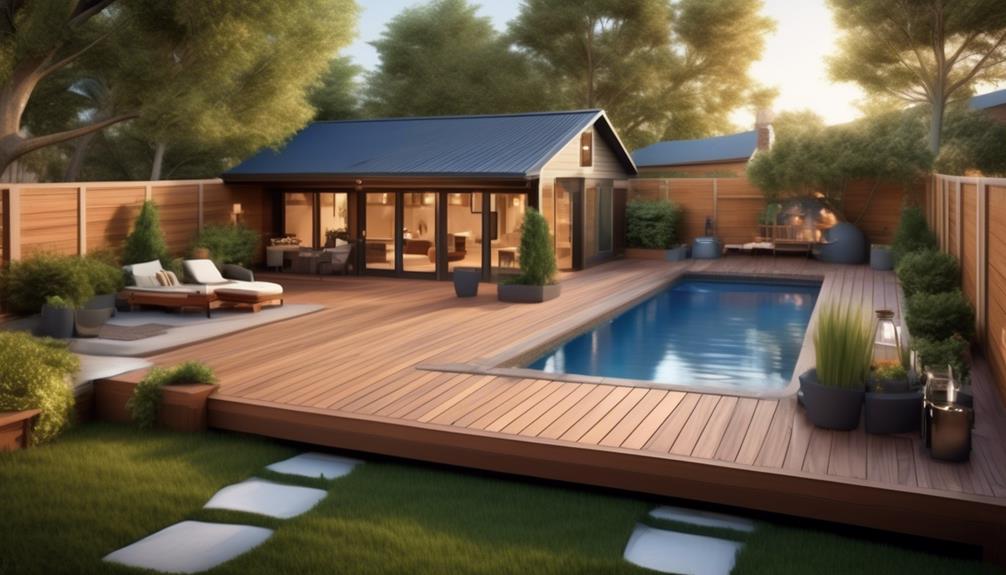
For the smooth and hassle-free installation of your spa, it is essential to ensure that the installation site is level and provides a solid foundation to support the weight of the spa. Additionally, it’s crucial to check for proper electrical supply and access to water for filling the spa. The proximity of the spa to a suitable drainage system should also be considered to prevent pooling water. Evaluating if there is adequate space for maintenance and repairs around the spa is equally important. Lastly, take into account the ease of access for delivery and installation of the spa to the desired location.
Optimal Installation Conditions Tips Level and Solid Foundation Ensure the installation site is level and provides a solid foundation to support the weight of the spa. Proper Electrical Supply Check for proper electrical supply and access to water for filling the spa. Suitable Drainage System Consider the proximity of the spa to a suitable drainage system to prevent pooling water. Space for Maintenance Evaluate if there is adequate space for maintenance and repairs around the spa. Easy Access for Delivery Take into account the ease of access for delivery and installation of the spa to the desired location.
Considering these factors is crucial for a successful spa installation, ensuring that you can fully enjoy the benefits of your new investment.
Best Times for Negotiating Prices

As we consider the optimal installation conditions for your spa, let’s now explore the best times for negotiating prices to ensure you get the most value for your investment.
Fall through winter is the prime time to look for the best deals on hot tubs. During these seasons, retailers start clearing out excess stock of inventory, making it a great time to buy. They often offer discounts on in-stock, warehouse inventory spas and floor models, allowing you to find a great price on a hot tub.
Year-round, you can also negotiate for discounted hot tubs with cosmetic damage or inquire about factory seconds or pre-owned spas for significant discounts, ensuring that you’re getting the best deals available.
Spring and early summer can also be a great time to buy, as special package pricing for gazebos or patio furniture may be available, giving you the opportunity to find the best hot tubs with added value. However, it’s important to be cautious about offsite events, as prices at these events are often higher than in local stores, and you may not be getting the best deals.
Factors Affecting Hot Tub Pricing
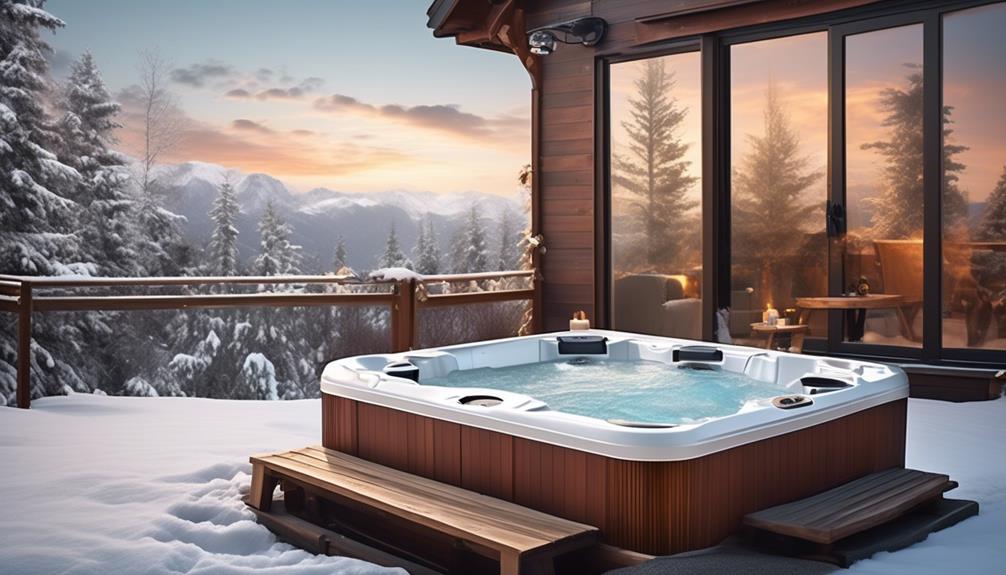
Factors affecting hot tub pricing include the quality of materials, features, and brand reputation. When considering the purchase of a hot tub, it’s essential to understand the various factors that influence pricing. Here’s a breakdown of key elements affecting hot tub prices:
Factors Affecting Hot Tub Pricing Description Quality of Materials High-quality materials such as durable acrylic shells, efficient insulation, and robust frames contribute to a higher price point. Features Hot tubs equipped with advanced features like hydrotherapy jets, LED lighting, Bluetooth audio systems, and energy-efficient technology tend to be priced higher. Brand Reputation Well-established brands with a history of reliability, exceptional customer service, and innovative designs often command premium prices.
| Local Support | Consider the availability of local service and maintenance support when determining the overall value of a hot tub. Purchasing from local spa retailers can ensure timely assistance and support.
Understanding these factors can help determine the best time of year to buy a hot tub and make an informed decision based on the local inventory available. Additionally, it’s important to consider the selling season and end-of-the-year clearance sales for potential discounts, especially for models with cosmetic damage or floor models.
Where to Find the Best Deals
Where can we find the best deals on hot tubs? When it comes to buying a hot tub, timing is everything. Fall through winter is prime time for scoring great deals on new hot tubs. Dealers are eager to move inventory before the slow season, offering instant price reductions and attractive financing options. Keep an eye out for special promotions and clearance sales during these months.
Year-round, you can also find great deals on hot tubs with minor cosmetic damage, which often come at a significant discount.
Spring and early summer are another sweet spot for buying hot tubs. Dealers offer competitive prices and throw in extras like accessories or upgrades to entice buyers. However, offsite events mightn’t be the best place to buy a hot tub, as they can lack the local support needed for servicing.
When seeking the best deals, consider the overall value, including the cost of installation and ongoing maintenance. By timing your purchase right and keeping an eye out for promotions, you can find a great deal on your dream hot tub.
Frequently Asked Questions
What Is the Best Time to Buy a Hot Tub?
We think the best time to buy a hot tub is during fall and winter for the lowest prices. You can snag great deals on clearance and floor models. If you’re open to it, consider discounted hot tubs with cosmetic damage or pre-owned spas.
Spring and early summer also offer sweet package deals. But avoid buying at offsite events or home & garden shows; prices tend to be higher. Also, make sure to prioritize local support for servicing.
Is It Cheaper to Buy a Hot Tub in the Summer?
Absolutely, it’s cheaper to buy a hot tub in the fall through winter. That’s when you can snag amazing deals due to inventory clearance sales.
However, spring and early summer offer extra features and special package pricing. Avoid offsite events like home and garden shows for the best deals.
Always consider long-term service and support when making your purchase. It’s all about timing and knowing where to look for the best bargains.
Do Hot Tub Prices Go Down in Winter?
Yes, hot tub prices do go down in winter. This is the best time to snag a great deal on a spa due to inventory and floor model clearance sales. You can score the lowest possible price during this season.
Keep an eye out for amazing discounts on damaged, 2nds, or pre-owned hot tubs, which are available year-round. These options offer significant savings, making it a great time to buy a spa.
How Do I Get the Best Price on a Hot Tub?
We get the best price on a hot tub by shopping during inventory clearance sales in fall and winter or by considering damaged/2nd/pre-owned spas year-round.
In spring and early summer, we can maximize value with additional features and special package pricing.
We avoid buying at home & garden/fairs & offsite events, as prices may be higher.
It’s important to consider local support for service when purchasing to ensure long-term support.
When is the Best Time to Buy a Spa for a Salon to Attract Clients?
The best time to get clients for your salon is when you invest in a spa. Offering spa services can attract more clients who are seeking relaxation and self-care. Adding this feature to your salon can set you apart from competitors and draw in new clients looking for a luxurious experience.
Conclusion
So, when it comes to buying a spa, timing is everything. Whether it’s taking advantage of seasonal sales in the fall and winter, negotiating for the best price, or keeping an eye out for damaged or pre-owned options year-round, there are plenty of ways to save.
Just like finding the perfect temperature for your spa, finding the best time to buy is all about striking the right balance for your needs and budget.
- About the Author
- Latest Posts
Introducing Ron, the home decor aficionado at ByRetreat, whose passion for creating beautiful and inviting spaces is at the heart of his work. With his deep knowledge of home decor and his innate sense of style, Ron brings a wealth of expertise and a keen eye for detail to the ByRetreat team.
Ron’s love for home decor goes beyond aesthetics; he understands that our surroundings play a significant role in our overall well-being and productivity. With this in mind, Ron is dedicated to transforming remote workspaces into havens of comfort, functionality, and beauty.
Spa Design
Ultimate Spa Room Design Plan Ideas
Open your mind to the transformative power of biophilic design in Ultimate Spa Room Design Plan Ideas…
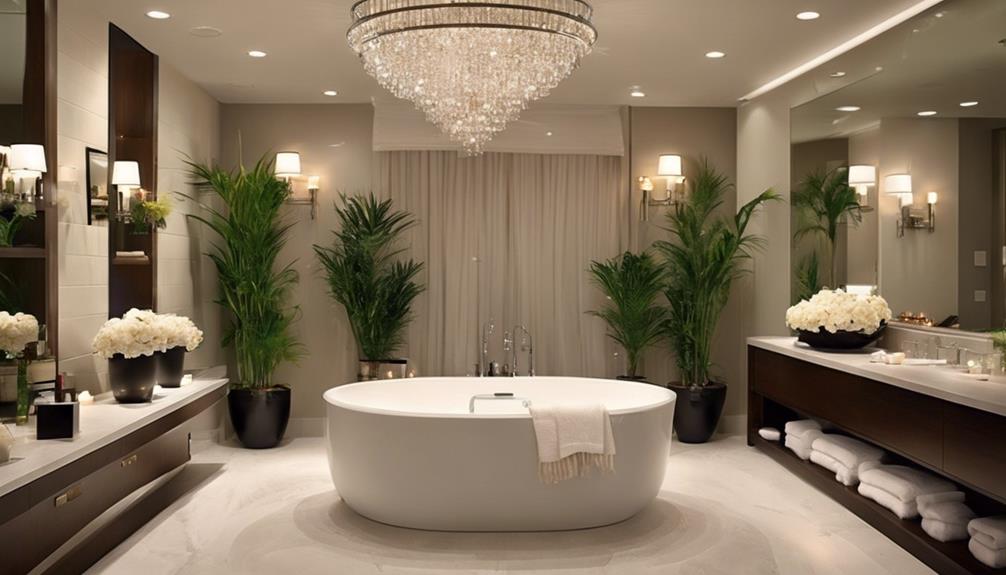
As we explore the realm of Ultimate Spa Room Design Plan Ideas, one aspect that might surprise you is the significance of incorporating biophilic design elements to enhance the overall ambiance.
By seamlessly blending nature-inspired elements into the spa room, we can create a harmonious space that promotes relaxation and tranquility.
This approach not only adds a touch of serenity but also elevates the sensory experience for guests, making it an essential consideration in crafting the ultimate spa retreat.
Key Takeaways
- Soft pastel shades and natural colors promote a calming atmosphere.
- Incorporate dimmable and natural lighting for serenity.
- Integrate natural elements like plants and water features.
- Choose functional furniture and enhance ambiance with tranquil sound and scents.
Relaxing Color Scheme Ideas
When selecting colors for a spa room to create a relaxing ambiance, soft pastel shades like pale blue, light pink, and mint green are excellent choices to instill a sense of calm and tranquility. These hues are perfect for spa interior design ideas as they evoke a serene atmosphere that promotes relaxation. Pairing these soft colors with soft lighting can enhance the peaceful ambiance, creating a soothing environment for guests to unwind and destress.
In addition to pastel shades, earthly tones such as warm browns, soft greens, and sandy hues can bring a grounding effect to the spa room. These natural colors connect with the tranquility of nature, providing a sense of balance and harmony. Integrating these earthly tones into the design scheme can further elevate the spa experience, enveloping visitors in a cocoon of serenity and comfort.
When considering spa interior design ideas, incorporating a mix of pastel colors and earthly tones can transform the space into a tranquil oasis, offering a retreat from the hustle and bustle of everyday life.
Lighting Strategies for Serenity

Soft, warm lighting techniques play a crucial role in creating a serene and calming atmosphere within spa rooms, enhancing the overall relaxation experience for guests. To achieve the perfect lighting design for your spa room, consider the following strategies:
- Dimmable Lights: Opt for dimmable lights to adjust the ambiance based on different treatments and client preferences.
- Natural Light Sources: Incorporate natural light sources like windows or skylights to amplify the feeling of tranquility and connection to the outdoors.
- LED Lighting: Choose energy-efficient LED lighting for its versatility in customizing color temperatures to match the desired mood.
- Layered Lighting: Implement a combination of task lighting, ambient lighting, and accent lighting to create a well-balanced and soothing environment that caters to various needs.
- Lighting Control Systems: Invest in lighting control systems to easily manage and set different lighting scenarios for different times of the day or specific treatments, enhancing the overall spa experience.
Incorporating Natural Elements
Incorporating natural elements into spa room design transforms the space into a tranquil oasis that rejuvenates the senses and promotes relaxation. To create a luxurious spa experience, consider integrating indoor plants, wood textures, and stone features into your spa decor. These elements bring a fresh and calming ambiance, connecting guests with nature. Organic materials like bamboo, rattan, and jute further enhance this natural connection, adding a touch of sophistication to your spa design.
Maximize the soothing effects by utilizing natural light through large windows or skylights, which infuse the spa room with a sense of openness and tranquility. Complementing these elements, earthy color palettes inspired by soft greens, blues, and earth tones contribute to a serene and relaxing atmosphere, perfect for unwinding in luxury.
For an added touch of rejuvenation, consider integrating water features such as indoor fountains or cascading water walls. These elements bring a sense of serenity, creating the ultimate spa environment for relaxation and renewal.
Functional and Stylish Furniture Choices
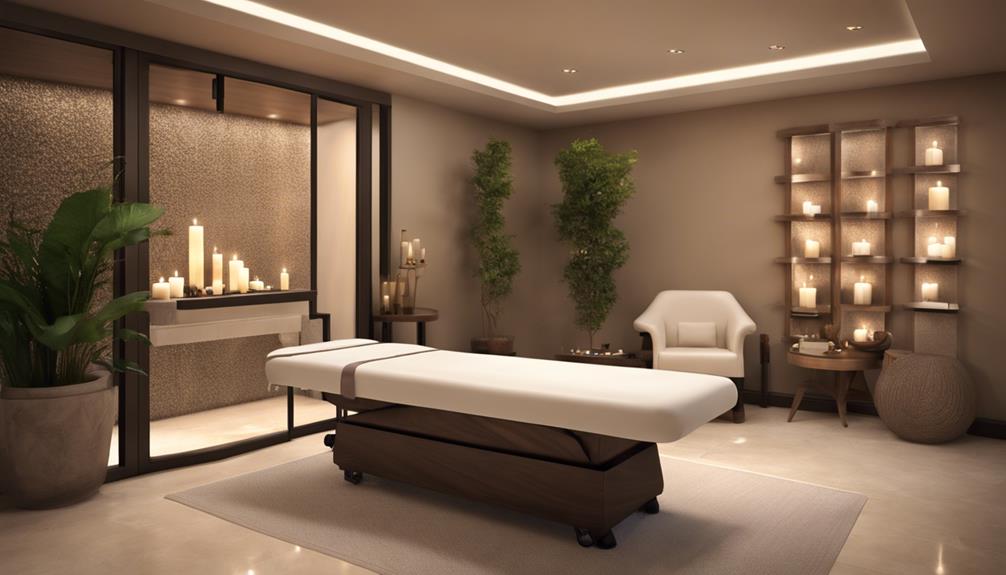
To ensure a harmonious blend of functionality and style in your spa room, selecting ergonomic and comfortable massage tables is paramount for client relaxation and therapist efficiency. When designing your massage room, treatment rooms, or reception areas, consider the following furniture choices:
- Ergonomic Massage Tables: Choose tables with adjustable height settings and plush cushioning for ultimate client comfort.
- Stylish Cabinetry: Opt for sleek cabinets with ample storage space for towels, linens, and essential oils, keeping everything organized and easily accessible.
- Versatile Seating Options: Incorporate cushioned chairs or stools that are both stylish and comfortable for clients during consultations or treatments.
- Adjustable Facial Beds: Invest in beds with adjustable positions and soft cushions to cater to a variety of treatments while ensuring client relaxation.
- Aesthetic Decor Pieces: Enhance the ambiance with quality decor items like elegant wall art, mirrors, and soothing lighting fixtures to create a tranquil atmosphere in your spa room.
Tranquil Sound and Scent Enhancements
Immersing clients in a sensory oasis, our spa room captivates with tranquil soundscapes and aromatic delights, fostering a serene ambiance for ultimate relaxation. At our day spa, we understand the impact that calming sounds and soothing scents can have on creating a truly rejuvenating experience.
By incorporating nature sounds, soft music, or the gentle trickle of water, we aim to transport our clients to a place of tranquility and peace. Essential oil diffusers with scents like lavender, eucalyptus, or chamomile further enhance the atmosphere, enveloping guests in a cocoon of relaxation.
To ensure an undisturbed experience, soundproofing the walls and ceilings minimizes outside noise, while a customizable sound system allows us to tailor the ambiance to individual preferences. By utilizing aromatherapy techniques and scented candles, we provide a multi-sensory journey that not only relaxes the body but also soothes the mind, creating a space that truly makes it look and feel like a sanctuary of serenity.
Frequently Asked Questions
How Do I Design My Spa Room?
We design our spa room by incorporating soft color palettes, natural elements like indoor plants, luxurious features, and a blend of old and new aesthetics. We ensure a soothing ambiance with dim lighting and unique design elements for character.
What Rooms Should Be in a Spa?
In a spa, essential rooms like reception, treatment, relaxation, and changing areas are vital. Additional facilities such as sauna, steam room, and hydrotherapy tubs enhance the experience. Specialized spaces like manicure stations and wellness rooms cater to diverse needs.
How to Build a Spa Room?
To build a spa room, we prioritize size, layout, ventilation, and lighting for comfort. We select calming colors, soft textures, and natural elements. Quality furniture, equipment, and decor enhance the experience. Privacy, soundproofing, and amenities elevate it.
How Can I Make My House Look Like a Spa?
To make our house look like a spa, we'll incorporate calming colors, natural elements, aromatherapy, luxurious textiles, dimmable lighting, soothing music, and comfortable seating. Our goal is to create a tranquil oasis where relaxation and rejuvenation are always at hand.
Conclusion
In conclusion, when it comes to creating the ultimate spa room design plan, it's all about finding the perfect balance between luxury and relaxation.
By incorporating soothing color schemes, strategic lighting, natural elements, stylish furniture, and calming sound and scent enhancements, you can create a space that truly transports your guests to a state of bliss.
Remember, the devil is in the details, so don't be afraid to get creative and add those special touches that make all the difference.
- About the Author
- Latest Posts
Introducing Ron, the home decor aficionado at ByRetreat, whose passion for creating beautiful and inviting spaces is at the heart of his work. With his deep knowledge of home decor and his innate sense of style, Ron brings a wealth of expertise and a keen eye for detail to the ByRetreat team.
Ron’s love for home decor goes beyond aesthetics; he understands that our surroundings play a significant role in our overall well-being and productivity. With this in mind, Ron is dedicated to transforming remote workspaces into havens of comfort, functionality, and beauty.
Retreat Ideas
Fun Ideas for a Creative Retreat
Embark on a journey of discovery, as we unveil an ocean of exciting and innovative activities for your creative retreat.

Embarking on a creative retreat is like setting sail on a voyage of self-discovery, where each wave carries the promise of new inspiration and uncharted creativity.
As we navigate through the vast sea of possibilities, our minds brimming with anticipation, we are met with a treasure trove of fun ideas waiting to be unearthed.
From the shores of collaborative brainstorming to the peaks of artistic challenges, there is a world of adventure and exploration awaiting us.
So, let's set our compass towards a horizon filled with exciting possibilities and see where this creative journey takes us.
Key Takeaways
- Outdoor workshops offer a dynamic space for artistic growth and inspiration.
- Collaborative group engagements ignite creativity, camaraderie, and skill enhancement.
- Mindfulness practices reduce stress, enhance focus, and promote relaxation for creativity.
- Adventure activities like hiking boost creativity, teamwork, and fresh perspectives for innovation.
Outdoor Workshops and Classes
Have you ever considered the invigorating experience of attending outdoor workshops and classes for a boost in creativity and mental well-being? Engaging in outdoor activities as a team during creative retreats can spark fresh ideas and enhance the overall experience. Creative retreats set in outdoor settings offer a unique opportunity to connect with nature, fostering inspiration and creativity among participants. The hands-on learning and exploration that outdoor workshops provide can lead to innovative approaches to artistic challenges.
Being surrounded by nature during these workshops creates a conducive environment for brainstorming and collaboration. The fresh air and natural light can invigorate the mind, allowing participants to immerse themselves fully in their creative processes. Whether it's painting landscapes, writing poetry by a river, or sculpting in a forest clearing, outdoor workshops offer a dynamic space for artistic growth.
Put simply, outdoor workshops and classes aren't only about learning new skills but also about embracing the beauty of the natural world to fuel our creative endeavors.
Artistic Group Activities and Challenges
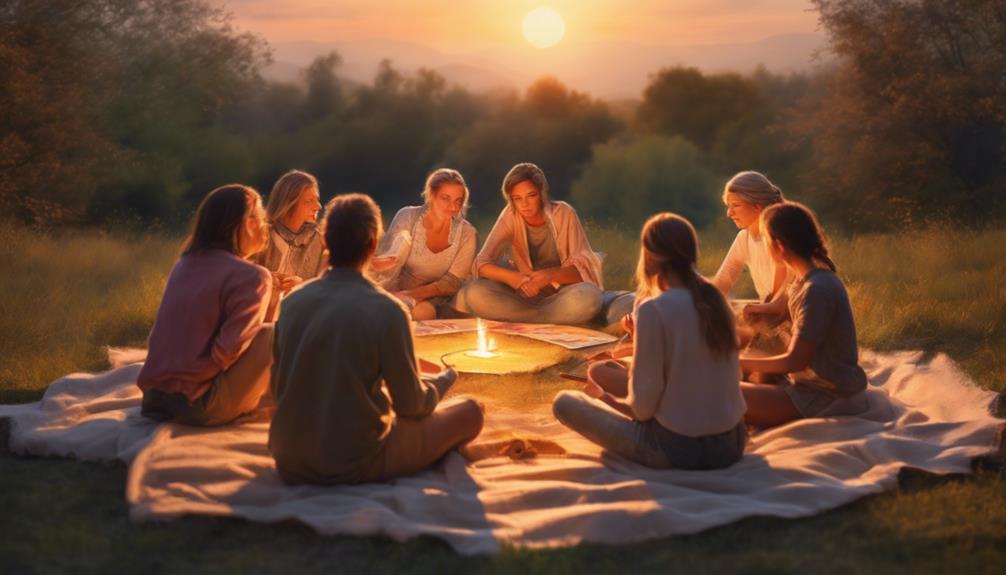
Exploring the domain of artistic group activities and challenges, participants can engage in collaborative painting sessions and creative competitions to ignite their creativity and foster a sense of camaraderie. Team retreats can benefit greatly from these group art projects, where individuals work together towards a common artistic goal.
These activities not only encourage teamwork but also allow for the exchange of ideas and techniques, enhancing everyone's skills in the process. To add an extra layer of excitement, challenges like timed art competitions or themed art prompts can spark creativity and friendly competition among participants.
In addition, organizing a group art exhibition or showcase at the end of the retreat can provide a platform for individuals to display their work and celebrate their collective achievements. Engaging in art critique sessions during the retreat can also be incredibly beneficial, as participants receive constructive feedback to improve their artistic abilities.
Furthermore, hosting art workshops led by professional artists can offer valuable learning experiences and inspiration for all involved in the creative retreat.
Mindfulness and Meditation Sessions
During our creative retreat, participants will engage in rejuvenating mindfulness and meditation sessions aimed at enhancing focus, reducing stress, and tapping into our creative potential. Mindfulness and meditation practices are powerful tools that can help us cultivate a sense of calm and clarity, allowing for a deeper connection with our inner creative spark. By incorporating these sessions into our retreat schedule, we are providing attendees with the opportunity to center themselves, quiet the noise of everyday life, and fully immerse in the present moment.
| Benefits of Mindfulness and Meditation Sessions | |
|---|---|
| Reduces Stress | Increases Focus |
| Enhances Creativity | Promotes Relaxation |
Collaborative Brainstorming and Idea Sharing

As we move from our rejuvenating mindfulness and meditation sessions, we shift our focus towards collaborative brainstorming and idea sharing, fostering a dynamic environment where creativity can flourish through shared insights and collective innovation. Here are four crucial aspects of this collaborative process:
- Building on Creativity: Collaborative brainstorming allows participants to share their unique ideas and perspectives, creating a melting pot of creativity that can lead to novel solutions and concepts.
- Supportive Environment: Idea sharing cultivates a supportive atmosphere where individuals feel safe expressing their thoughts, leading to a rich exchange of ideas and feedback that can spark new creative directions.
- Diverse Perspectives: Group discussions enable the generation of diverse viewpoints, which can help in exploring different angles and approaches to challenges, fostering a culture of innovation and out-of-the-box thinking.
- Inspiration and Breakthroughs: Sharing experiences and insights can serve as a catalyst for inspiration, igniting new creative breakthroughs and pushing participants to explore innovative pathways in their thinking process.
Collaborative brainstorming and idea sharing not only enhance creativity but also strengthen bonds among participants, making it a crucial component of any creative retreat experience.
Adventure and Exploration Excursions
Embarking on thrilling adventure and exploration excursions, we immerse ourselves in nature's wonders and push the boundaries of our comfort zones. These excursions, which can involve activities like hiking, kayaking, or zip-lining, offer a unique opportunity for team members to connect with nature and each other.
Engaging in outdoor adventures not only boosts creativity and inspires new ideas but also fosters communication skills and promotes teamwork. By exploring unfamiliar landscapes and trying new experiences together, we can spark innovation and gain fresh perspectives that are invaluable in a creative retreat setting.
These adventures create memorable moments and bonding opportunities among participants, strengthening the relationships within the group. When planning to create a retreat that encourages collaboration and creativity, incorporating adventure and exploration excursions can be a powerful way to energize and inspire team members while fostering a sense of unity and shared accomplishment.
Frequently Asked Questions
How Do You Make a Retreat Interesting?
To make a retreat interesting, we blend diverse activities, workshops, and classes to cater to varied interests and skill levels. We foster a relaxed, inspiring environment that encourages exploration and collaboration, promoting personal growth and self-expression.
How to Do a Creative Retreat?
To do a creative retreat, we'll gather in a serene spot, craft a diverse agenda, lead engaging workshops, encourage self-reflection, and nurture a supportive atmosphere. Let's spark creativity, explore, and connect deeply.
What Are Fun Activities for Board Retreats?
For board retreats, we recommend team-building exercises, creative workshops like painting or DIY crafts, brainstorming sessions, outdoor activities like nature walks or bonfires, and relaxation sessions such as yoga or spa treatments for a well-rounded experience.
What Is the Best Game for a Group Retreat?
When it comes to the best game for a group retreat, we highly recommend escape room challenges. They foster teamwork, critical thinking, and excitement, creating a dynamic experience that brings people together.
Conclusion
To sum up, hosting a creative retreat can lead to personal growth and relaxation, while fostering a supportive community of like-minded individuals.
Did you know that 90% of participants in creative retreats reported feeling more inspired and motivated after attending?
By offering diverse workshops and activities, ensuring participant safety, and collecting feedback for future improvements, a successful creative retreat can provide an invigorating and inspiring experience for all involved.
- About the Author
- Latest Posts
Introducing Ron, the home decor aficionado at ByRetreat, whose passion for creating beautiful and inviting spaces is at the heart of his work. With his deep knowledge of home decor and his innate sense of style, Ron brings a wealth of expertise and a keen eye for detail to the ByRetreat team.
Ron’s love for home decor goes beyond aesthetics; he understands that our surroundings play a significant role in our overall well-being and productivity. With this in mind, Ron is dedicated to transforming remote workspaces into havens of comfort, functionality, and beauty.
Spa Design
10 Dental Design Spa Trends in San Diego
Immerse yourself in the innovative world of dental design spa trends in San Diego, where cutting-edge concepts are reshaping the future of dentistry.
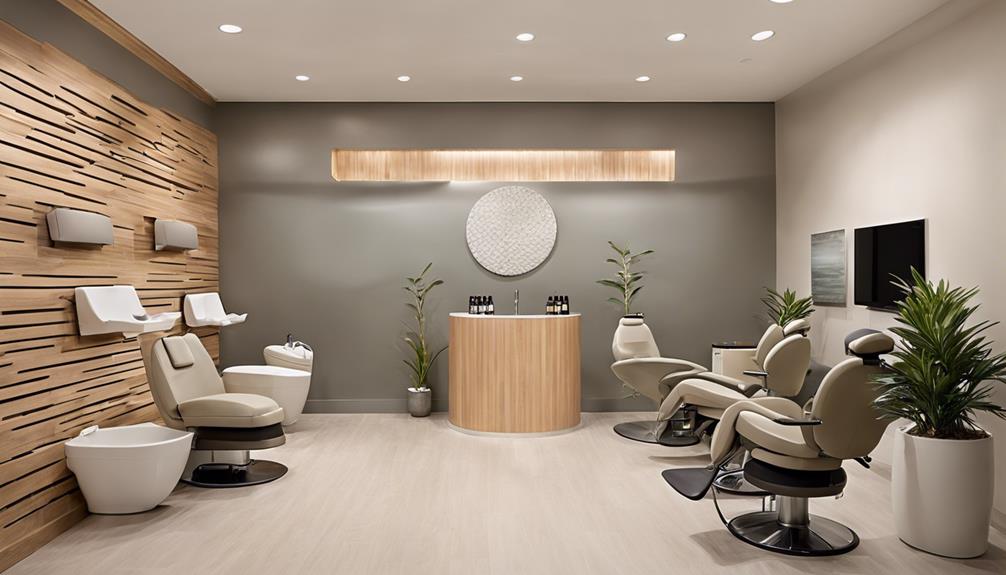
As we explore the evolving landscape of dental design spa trends in San Diego, one might question the necessity of incorporating innovative elements into traditional dental practices.
However, the fusion of sustainability, technology, and patient-centric design in these spa trends offers a glimpse into the future of dentistry.
The integration of sustainable materials, biophilic elements, and multi-sensory experiences not only revolutionizes the patient experience but also sets a new standard for dental care.
Stay tuned to discover how these trends are reshaping the dental industry and enhancing the overall well-being of patients in San Diego's dental spas.
Key Takeaways
- Sustainable materials like bamboo and reclaimed wood are prevalent in San Diego dental spas.
- Biophilic design elements such as natural light and greenery enhance patient well-being.
- Technology integration in treatment rooms includes smart dental equipment and virtual reality for improved care.
- Multi-sensory relaxation experiences like aromatherapy and calming visuals promote patient comfort.
Sustainable Materials in Design
Incorporating sustainable materials into dental spa design elevates both the aesthetic appeal and environmental consciousness of San Diego's dental industry.
In San Diego, dental spas are embracing eco-friendly practices by utilizing materials like bamboo, reclaimed wood, and recycled metal. These sustainable choices not only enhance the visual appeal of the spa but also demonstrate a commitment to environmental responsibility.
By opting for these eco-conscious materials, dental spa owners in San Diego are contributing to a greener environment and setting a positive example for the industry as a whole. Additionally, incorporating energy-efficient lighting and water-saving fixtures further promotes sustainability within these spaces.
This focus on sustainable materials not only adds a touch of sophistication to the design but also aligns with the values of ecological consciousness that are becoming increasingly important in the dental industry.
San Diego's dental spas are leading the way in combining style with eco-friendly practices, setting a new standard for innovative and environmentally conscious design.
Biophilic Design Elements

When it comes to creating a calming and stress-free environment in dental spa settings, natural light benefits and plant-filled spaces play a crucial role. Incorporating these biophilic design elements not only enhances patient comfort but also promotes relaxation.
Natural Light Benefits
Natural light, with its proven benefits for mood and well-being, plays a pivotal role in enhancing the dental spa experience in San Diego. In Dental Design SD, incorporating natural light not only improves the patient experience but also boosts productivity and reduces stress and anxiety.
Biophilic design principles emphasize the importance of connecting with nature, and natural light promotes this connection by creating a sense of well-being. Additionally, exposure to daylight in dental spaces helps regulate circadian rhythms, contributing to the overall health of both patients and staff.
Plant-Filled Spaces
Enhancing the ambiance of dental spas in San Diego, the integration of plant-filled spaces brings a sense of tranquility and connection to nature, benefiting both patients and staff alike. Biophilic design elements are on the rise, with dental spaces incorporating greenery to promote patient well-being and create a calming atmosphere.
The presence of plants not only reduces stress levels but also enhances air quality, contributing to a more relaxing environment for all. By embracing biophilic design, dental spas in San Diego are fostering a connection to nature that positively impacts the overall satisfaction and experience of patients.
This trend towards plant-filled spaces aligns with the goal of creating healing and rejuvenating environments for individuals seeking dental care.
- Greenery enhances patient well-being
- Plants contribute to a calming atmosphere
- Biophilic design promotes a connection to nature
Technology-Integrated Treatment Rooms
We're stepping into a new era of dental care that harmoniously blends cutting-edge technology with patient comfort.
Smart dental equipment, digital patient records, and virtual reality relaxation are revolutionizing the treatment experience in San Diego dental spas.
These technology-integrated treatment rooms are shaping a future where personalized care and state-of-the-art tools converge to elevate patient outcomes and satisfaction.
Smart Dental Equipment
Integrating cutting-edge technology into dental treatment rooms in San Diego enhances patient care and streamlines procedures for optimal efficiency. Smart dental equipment is revolutionizing the way dental practices operate. Here are a few key features that make this technology stand out:
- Advanced tools like digital imaging systems and chairside monitors improve diagnostics.
- Real-time data analysis allows for precise treatment planning.
- Streamlined workflows enhance the overall patient experience.
These innovations not only elevate the quality of care but also modernize dental practices, reflecting San Diego's commitment to staying at the forefront of technological advancements in dentistry.
Digital Patient Records
In San Diego's cutting-edge dental spas, digital patient records seamlessly integrate into treatment rooms, revolutionizing the way dentists access and manage vital information for enhanced patient care. This advanced technology allows for instant access to patient records, facilitating efficient and accurate treatment.
San Diego dental spas leverage technology-integrated treatment rooms to track treatment progress, create personalized care plans, and offer comprehensive dental services. By integrating digital patient records into treatment rooms, communication among dental team members is enhanced, leading to coordinated and tailored care for each patient.
The use of technology in San Diego dental spas ensures a seamless patient experience by digitizing records for quick reference and updates, ultimately improving the quality of care provided to patients.
Virtual Reality Relaxation
Enhancing the patient experience in San Diego's cutting-edge dental spas, Virtual Reality relaxation in technology-integrated treatment rooms offers immersive environments to alleviate anxiety and promote comfort during dental procedures. Patients can escape to calming settings such as a beach or forest through VR technology, transforming their experience.
The immersive experiences provided by VR integration help distract patients from discomfort, leading to a more positive and relaxed visit. Studies have shown that these distraction techniques significantly reduce perceived pain levels and anxiety during dental treatments.
This growing trend of Virtual Reality relaxation in dental settings aims to enhance overall patient satisfaction by prioritizing patient comfort and well-being.
- Virtual Reality relaxation offers immersive environments
- Patients can choose calming settings like a beach or forest
- Studies show reduced pain levels and anxiety
Multi-Sensory Relaxation Experiences
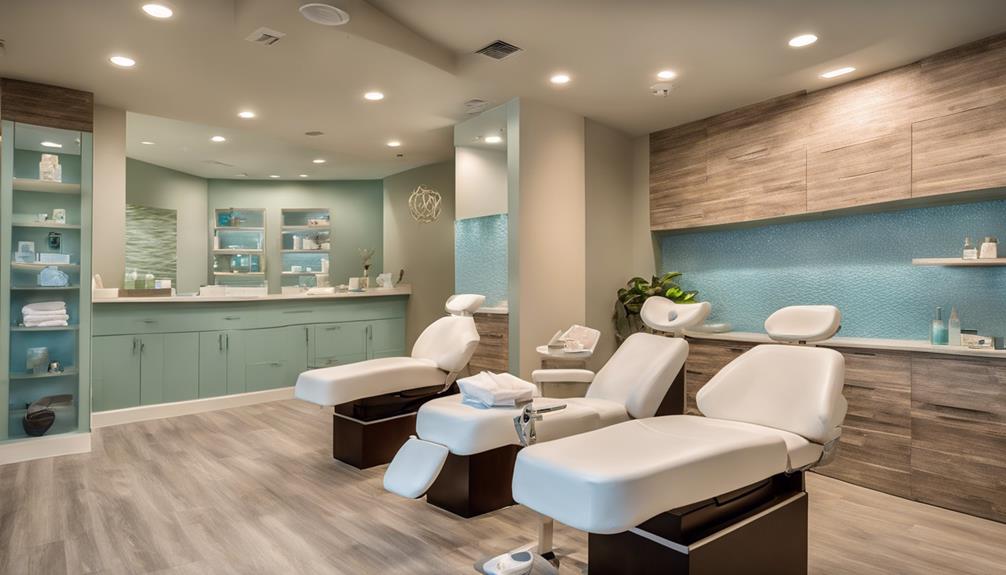
Utilizing a blend of aromatherapy, soothing music, and calming visuals, we craft a multi-sensory oasis at our dental spa in San Diego to envelop patients in tranquility and relaxation. In our space, specialized lighting techniques, such as chromotherapy, are strategically employed to enhance the overall relaxation experience and promote a profound sense of well-being. To add a tactile dimension to this soothing environment, we incorporate elements like heated massage chairs, warm towels, and essential oils, further immersing patients in a world of comfort and serenity. Water features like fountains or aquariums are seamlessly integrated into our dental spa design, creating a calming ambiance that helps patients unwind. Moreover, we offer high-tech relaxation tools like virtual reality headsets and noise-canceling headphones to elevate the multi-sensory experience, ensuring each visit is a harmonious blend of innovation and relaxation.
| Aromatherapy | Specialized Lighting | High-tech Tools |
|---|---|---|
| Essential oils | Chromotherapy | Virtual reality headsets |
| Calming scents | Ambient light fixtures | Noise-canceling headphones |
| Relaxing fragrances | LED mood lighting | Audio relaxation apps |
Customized Patient Comfort Amenities
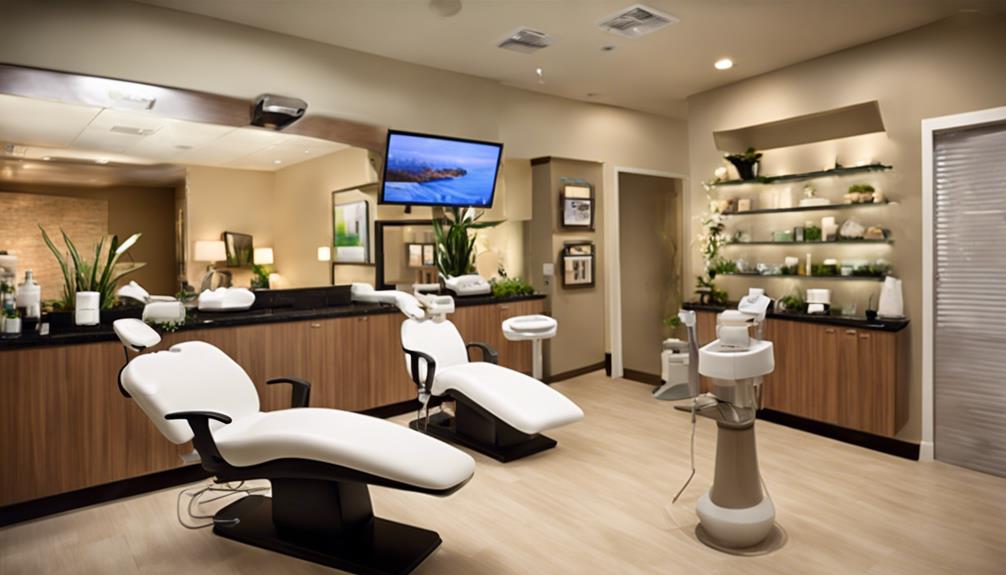
Crafting a personalized oasis of comfort and relaxation, our dental spa in San Diego meticulously tailors patient comfort amenities to elevate the overall experience. At our facility, we prioritize personalized patient comfort amenities to ensure a soothing environment for every individual. Here are three key features that set our customized treatment rooms apart:
- Warm Towels: Offering warm towels to our patients adds a luxurious touch, promoting relaxation and comfort during their visit.
- Adjustable Lighting: Our customized treatment rooms feature adjustable lighting options, allowing patients to set the ambiance to their preference for a calming experience.
- Ergonomic Treatment Chairs: We prioritize optimal comfort by providing ergonomic treatment chairs and cozy blankets to enhance the overall dental spa experience.
Wellness Programs for Oral Health
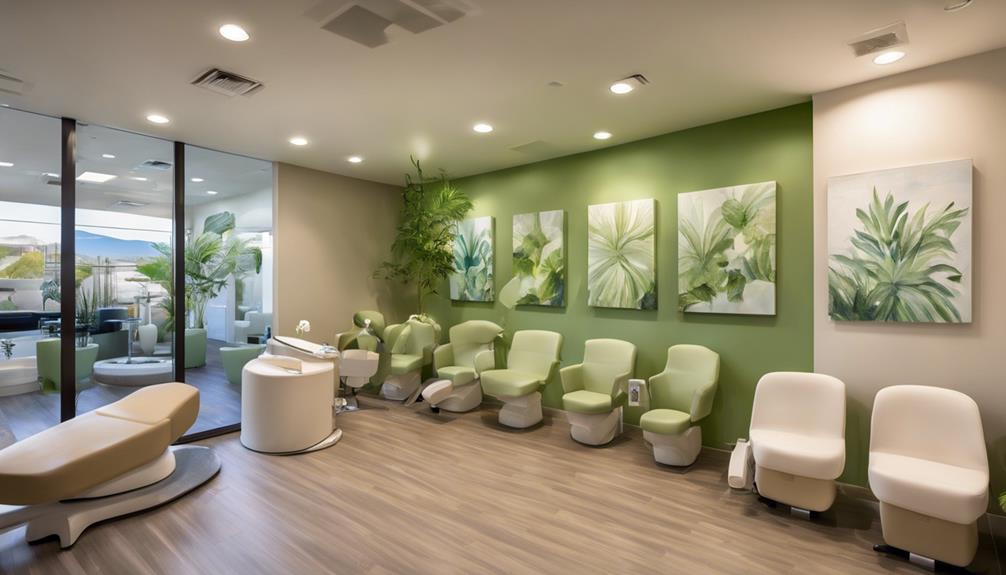
We prioritize preventive care and a holistic treatment approach in our oral health wellness programs.
By focusing on education, regular check-ups, and healthy habits, we aim to reduce dental issues and enhance individuals' quality of life.
Our programs also integrate nutritional guidance, stress management techniques, and personalized treatment plans for long-term oral health benefits.
Preventive Care Programs
In dental spas, preventive care programs prioritize promoting optimal oral health through tailored wellness plans that focus on regular check-ups, cleanings, and screenings. These programs are designed to prevent dental issues by emphasizing early detection and intervention.
Key components of these programs include:
- Personalized care plans to address individual oral health needs
- Regular check-ups to monitor oral health status
- Early detection of dental problems to prevent complications
Holistic Treatment Approach
Utilizing a comprehensive approach that merges dental treatments with holistic practices, dental design spas in San Diego implement wellness programs that prioritize both oral health and overall well-being. These wellness programs go beyond traditional dental care by integrating holistic approaches like nutrition counseling and stress management. By addressing lifestyle factors such as diet, exercise, and mental wellness, these programs promote preventive care and empower patients to take charge of their oral health.
The holistic treatment approach emphasizes the interconnectedness of oral health with overall wellness, encouraging a balanced and healthy lifestyle. Through education and personalized care, dental design spas aim to provide patients with the tools to maintain optimal oral health beyond just routine dental procedures.
Artistic Murals and Visual Installations

Enhancing the dental spa ambiance in San Diego, artistic murals and visual installations are becoming increasingly popular for creating a serene and visually captivating environment for patients. Local artists are often sought after to infuse their creativity into these spaces, adding a personal and unique touch to the design.
Here are three reasons why artistic elements play a crucial role in modern dental spa trends:
- Customized Artwork: Local artists are commissioned to create bespoke pieces that align with the practice's values and aesthetics, ensuring a cohesive and harmonious visual experience.
- Relaxing Environment: Artistic murals and installations help patients relax and feel at ease during their dental treatments, transforming the clinical setting into a calming sanctuary.
- Elegant Creativity: Creative visuals not only elevate the overall ambiance of the dental spa but also add a sense of sophistication and innovation to the space, setting it apart as a beacon of creativity in San Diego's dental scene.
Virtual Reality Dental Experiences
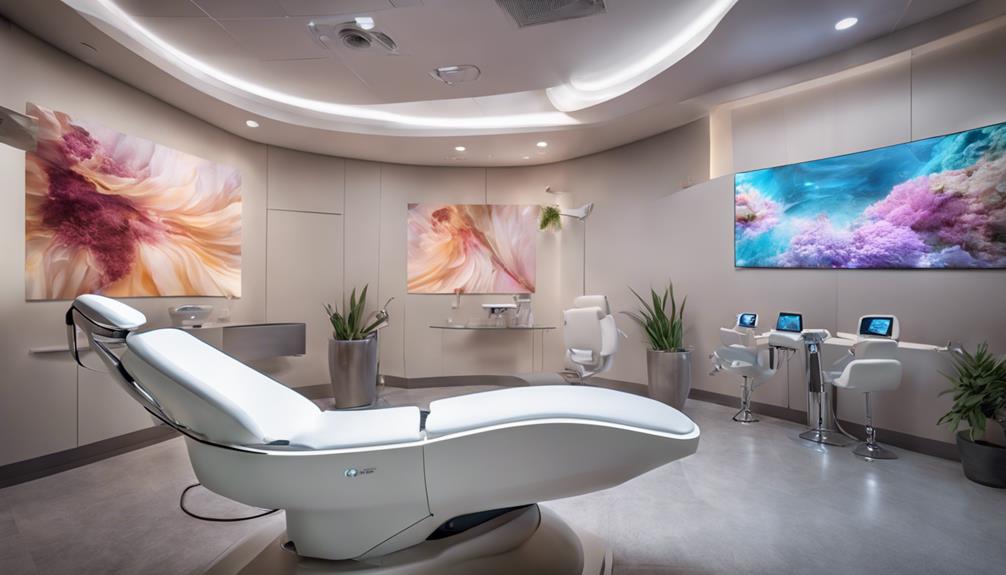
Virtual reality technology revolutionizes the patient experience at dental design spas by offering immersive consultations and treatment previews.
Through virtual reality technology, patients can step into a digital world where they visualize their dental procedures in intricate detail. This immersive experience not only enhances their understanding of the treatment process but also boosts their comfort levels.
Moreover, virtual reality plays a crucial role in treatment planning by providing a realistic view of the expected outcomes before the actual procedures commence. Patients can explore different treatment options, make informed decisions about their dental care, and actively participate in the planning process.
Green Practices and Environmental Consciousness
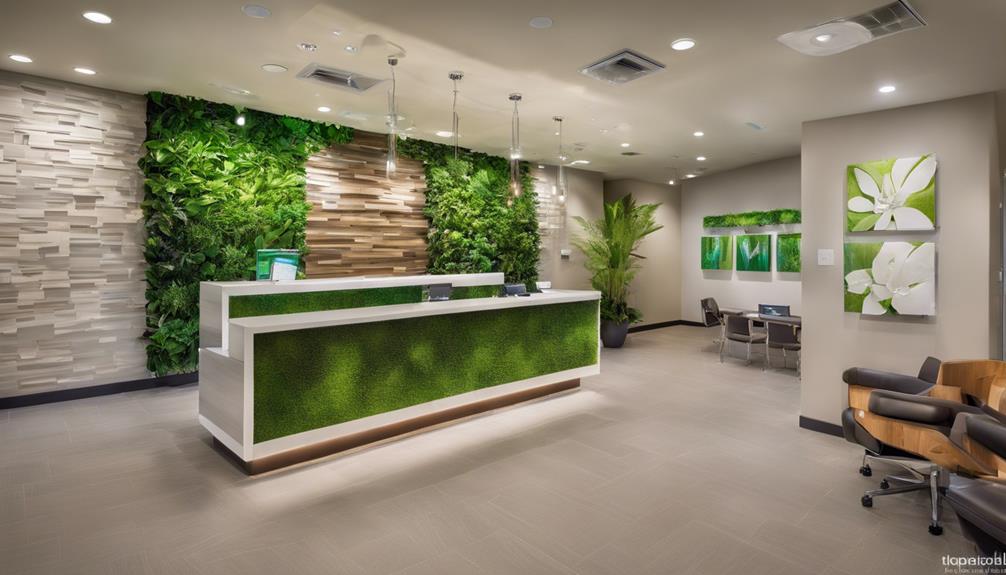
Embracing sustainable practices, our San Diego dental spas are actively incorporating eco-friendly materials and energy-efficient solutions to promote environmental awareness and responsibility. In our commitment to green practices and environmental consciousness, we've focused on the following key initiatives:
- Utilization of eco-friendly materials: From furniture to flooring, we prioritize the use of sustainable and recyclable materials in our dental spa designs.
- Integration of energy-efficient lighting: Energy-efficient LED lighting not only helps in reducing our carbon footprint but also creates a soothing ambiance for our patients.
- Water conservation efforts: By implementing water-saving technologies and low-flow fixtures, we strive to minimize water wastage without compromising on the quality of care provided.
These efforts not only reflect our dedication to environmental stewardship but also enhance the overall experience for our patients, who increasingly seek eco-conscious options in their healthcare choices.
Collaborative Spaces for Integrated Care

How do collaborative spaces in dental design spas revolutionize integrated care for patients in San Diego?
In San Diego collaborative spaces, dental professionals come together to provide integrated care that prioritizes a patient-centered approach. By housing various specialists in one location, these spaces enable seamless communication and teamwork among providers, resulting in comprehensive treatment plans tailored to individual patient needs.
This integration of services, including dental, orthodontic, cosmetic, and wellness care, ensures a holistic approach to oral health and overall well-being. Patients benefit from the convenience and efficiency of receiving all-encompassing care under one roof, with the added assurance of coordinated services within the collaborative space.
The collaborative nature of these dental design spas not only enhances the quality of care but also fosters a sense of trust and confidence in the healthcare delivery process. Integrated care in San Diego collaborative spaces represents a progressive model that prioritizes the well-being and satisfaction of patients.
Frequently Asked Questions
What Is the Market Size for Dental Aesthetics?
We estimate the global dental aesthetics market to reach $6.9 billion by 2024, with the U.S. cosmetic dentistry market projected to surpass $32 billion by 2025. San Diego's industry growth is fueled by demand for cosmetic dental services and technological advances.
What Is the Aesthetic Side of Dentistry?
The aesthetic side of dentistry goes beyond traditional dental care, focusing on enhancing smiles through cosmetic procedures. Are you ready to transform your smile with treatments like whitening, veneers, bonding, and contouring?
Conclusion
In conclusion, the dental design spa trends in San Diego are revolutionizing the way patients experience oral care.
From sustainable materials to virtual reality dental experiences, the future of dentistry is here.
With cutting-edge technology, personalized amenities, and a focus on patient comfort, San Diego's dental spas are taking oral health to the next level.
It's like stepping into a dental oasis where every smile is transformed into a work of art.
- About the Author
- Latest Posts
Introducing Ron, the home decor aficionado at ByRetreat, whose passion for creating beautiful and inviting spaces is at the heart of his work. With his deep knowledge of home decor and his innate sense of style, Ron brings a wealth of expertise and a keen eye for detail to the ByRetreat team.
Ron’s love for home decor goes beyond aesthetics; he understands that our surroundings play a significant role in our overall well-being and productivity. With this in mind, Ron is dedicated to transforming remote workspaces into havens of comfort, functionality, and beauty.
-

 Decor1 week ago
Decor1 week agoMaximalist Decor Explained: Embrace More Style
-

 Vetted2 weeks ago
Vetted2 weeks ago15 Best Foot Massagers for Neuropathy to Soothe Your Feet and Relieve Discomfort
-

 Vetted3 weeks ago
Vetted3 weeks ago15 Best Sports Laundry Detergents for Keeping Your Activewear Fresh and Clean
-

 Vetted3 weeks ago
Vetted3 weeks ago15 Best Tall Toilets for Seniors That Combine Comfort and Safety
-
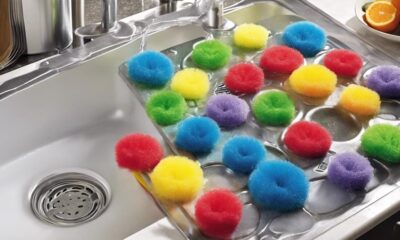
 Vetted4 weeks ago
Vetted4 weeks ago15 Best Dish Scrubbers to Keep Your Kitchen Sparkling Clean
-

 Vetted1 day ago
Vetted1 day ago15 Best Cleaners for Fiberglass Showers to Keep Your Bathroom Sparkling Clean
-
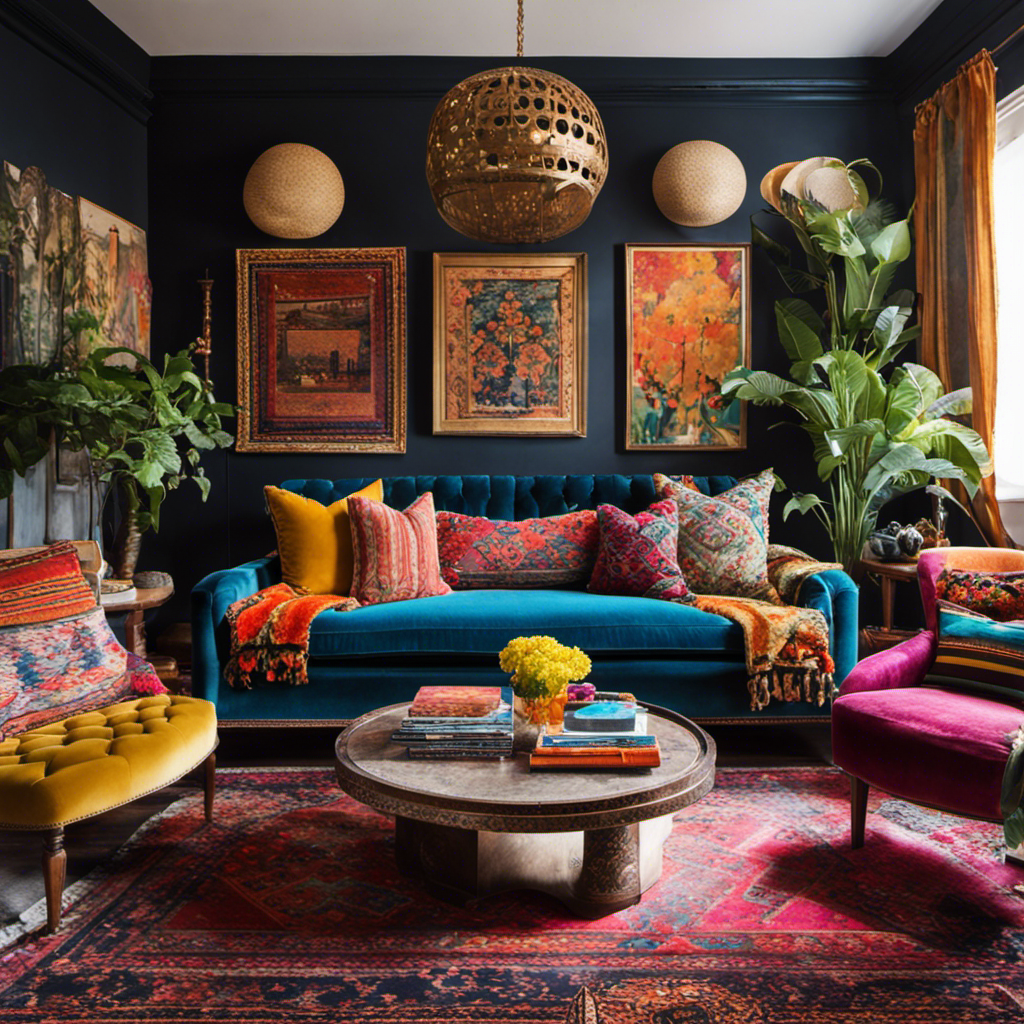
 Decor4 weeks ago
Decor4 weeks agoWhat Is Eclectic Home Decor
-

 Vetted6 days ago
Vetted6 days ago15 Best Organic Pest Control Solutions for a Naturally Pest-Free Home










